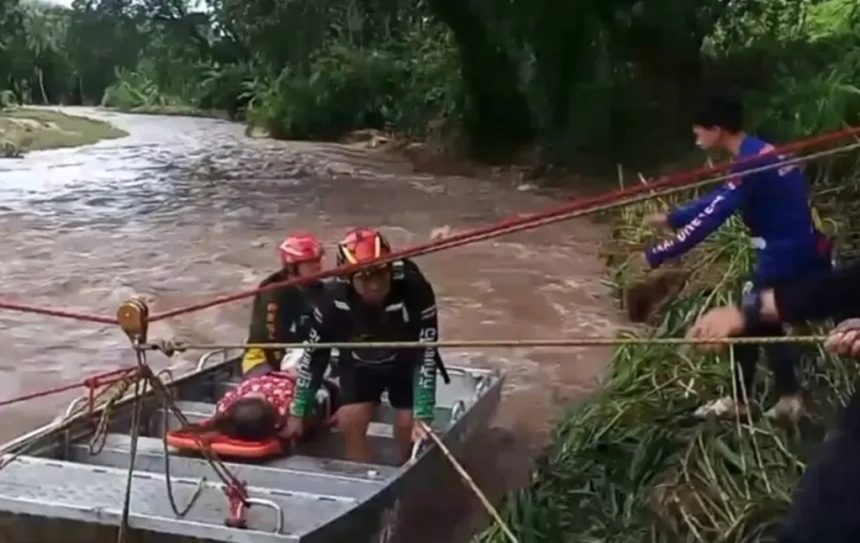One person is dead, and one is missing after flash floods caused by heavy rains in northern Thailand’s Lampang province, according to reports from local authorities on Monday.
Following deluges of rain in the Doi Khun Tan National Park region, the floods, which started at midnight, raced over several communities in the Hang Chat district. In several places, the water level rose to almost 1.5 meters, damaging homes and causing people to flee.
The fast-flowing waters in Ban Huai Rian village damaged around forty homes. A 48-year-old lady vanished amid the floodwaters. Her husband claimed to have last seen her running from their one-story home near the Mae Tan stream.
Her body was discovered in a nearby community. Authorities reported three injuries, all of whom were hospitalized.

Lampang Rail-line Destroyed
The floods also caused landslides in two places close to the Khun Tan railway tunnel, prompting the State Railway of Thailand to halt operations between the provinces of Lampang and Chiang Mai.
The railway authorities declared that until further notice, bus services will replace trains.
By mid-morning, the floodwaters in Lampang started to decrease, but authorities warned that as rain continued to fall, there could be more flooding in communities downstream.
Flash floods and landslides have affected several parts of the province, flooding many villages and obstructing a major road that connects the province to Chiang Mai,
Meanwhile, the flood situation in Chiang Rai is still quite serious. The Lao River overflowed in the district on Monday due to heavy rains, impacting approximately thirty houses in the sub-districts of Pa Ngew, Ban Pong, and Wiang.
In Ban Pa Ngew village in Tambon Pa Ngew, water from mountain runoff flooded a portion of the Chiang Rai – Chiang Mai highway.
Puttipong Sirimat, the governor of Chiang Rai, reported that he had met with local organizations to discuss the province’s flood recovery efforts, which included a “big clean-up” expedition.
He stated that the government and volunteers had been working to clean up the damaged public spaces and private homes, particularly those that belonged to vulnerable populations like the elderly and the crippled.














